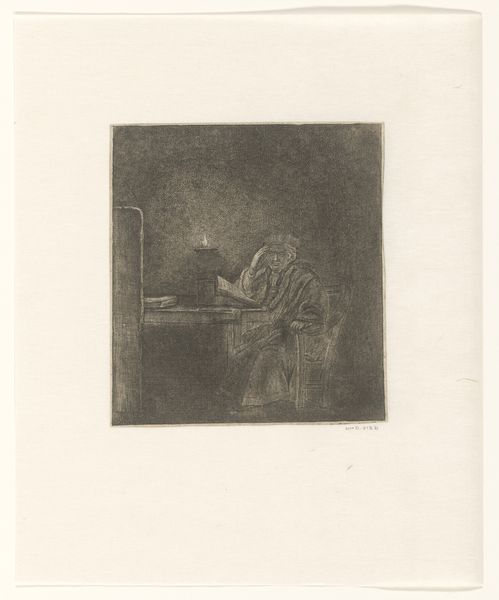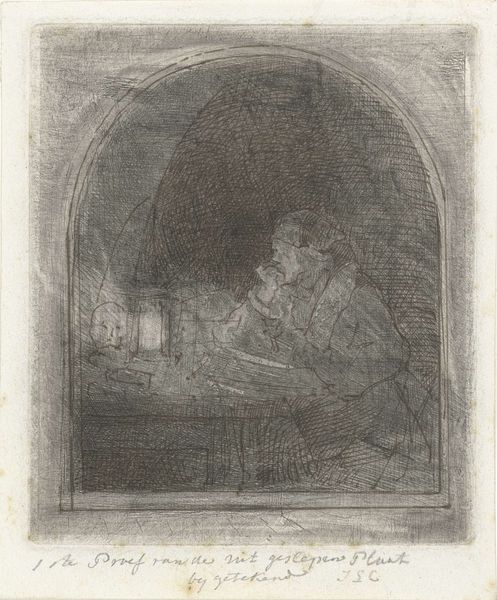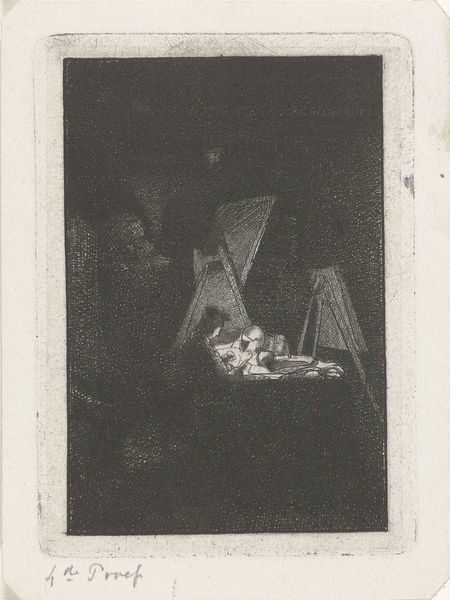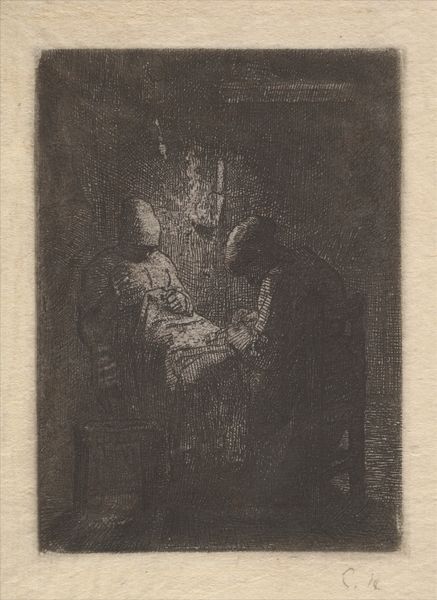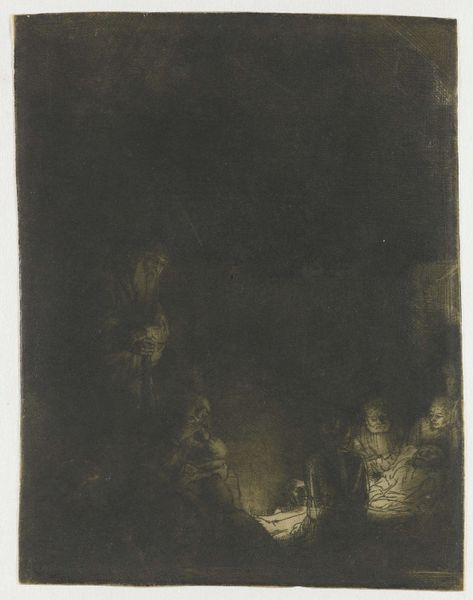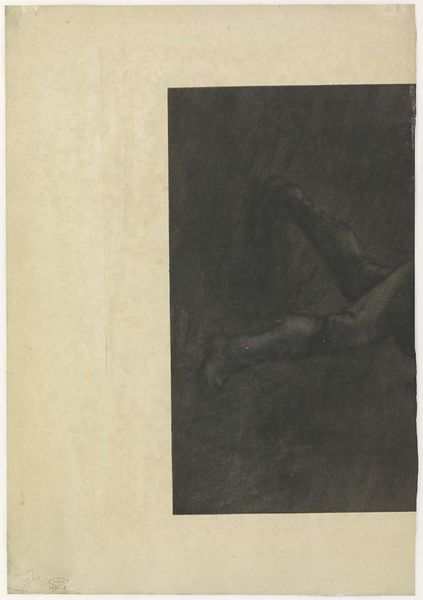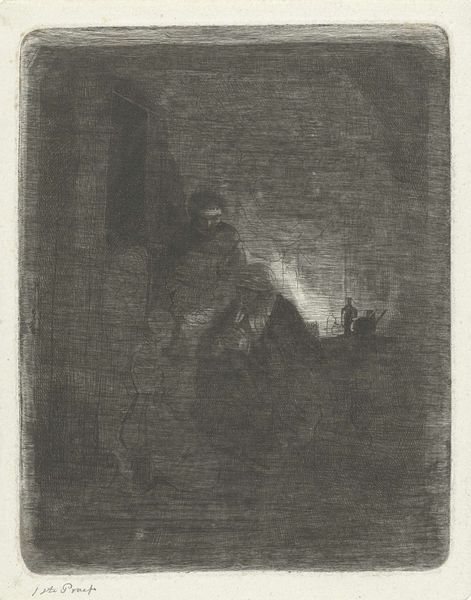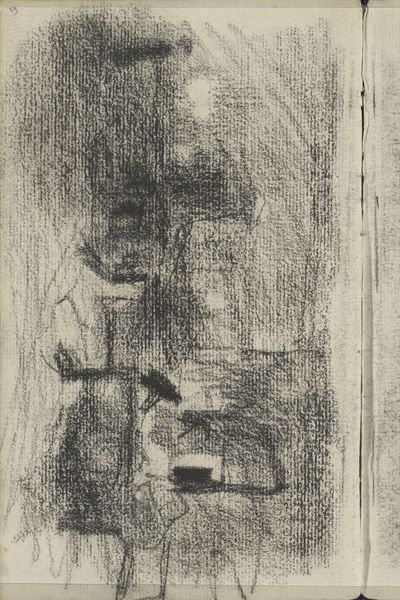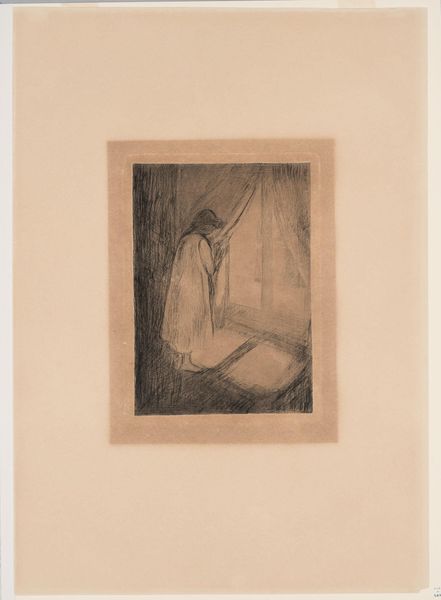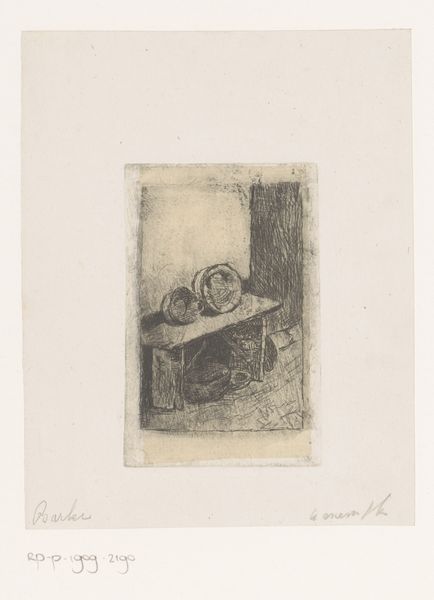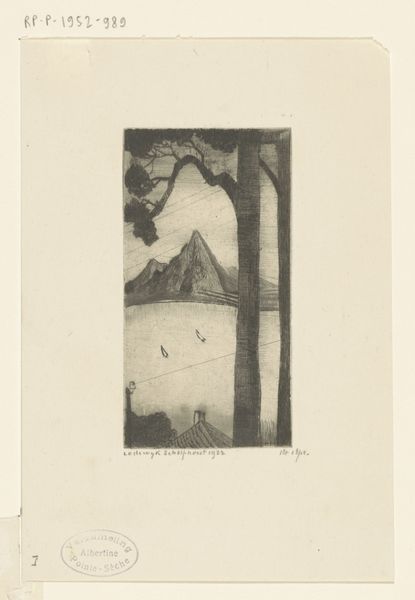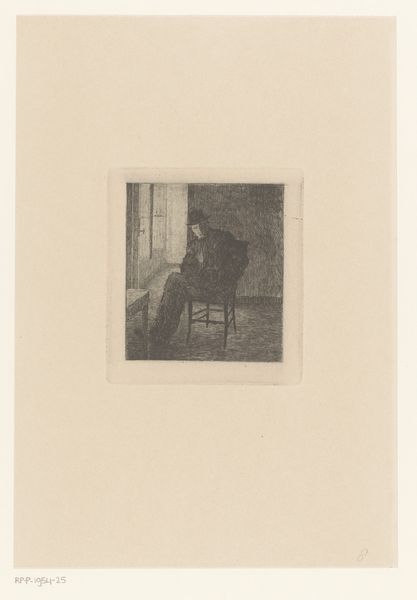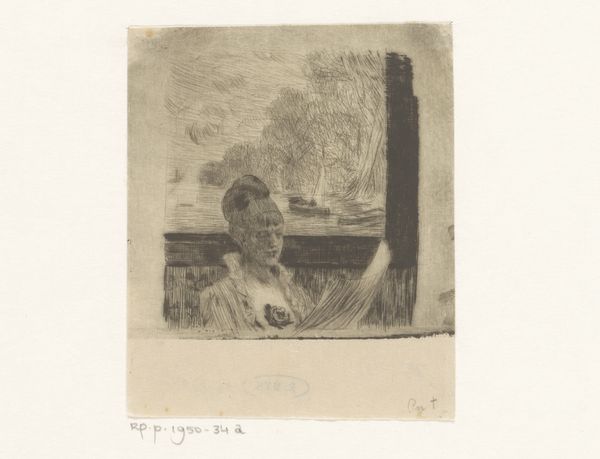
drawing, print, etching, engraving
#
portrait
#
drawing
# print
#
etching
#
old engraving style
#
genre-painting
#
history-painting
#
engraving
#
realism
Dimensions: width 69 mm, height 95 mm
Copyright: Rijks Museum: Open Domain
Curator: Let’s turn our attention to this work from the Rijksmuseum, "Kunstenaar in zijn atelier," or "Artist in his Studio," attributed to Jacobus Ludovicus Cornet and thought to have been made between 1825 and 1882. It's an etching or engraving, seemingly made in an old engraving style. Editor: Immediately, I see the solitary figure, hunched over in this darkly lit space. It evokes a feeling of intense concentration and perhaps even isolation, which speaks to the archetype of the dedicated artist. It's shrouded in mystery, but is there perhaps an allegory to decipher within these images? Curator: Interesting observation. The medium is likely etching, which involves a process of applying acid to a metal plate to create the lines, and engraving where the image is directly incised on the metal plate using a burin. Considering that this "genre painting" and "history painting," as we learn from the labels, relies on sharp lines and tonal contrast achieved by a rather complex printmaking process, this reveals much about the artist's own labor. Editor: It does! What appears simple at first glance reveals itself to be quite technical. The presence of history paintings evokes certain meanings about academic art of the period, perhaps about Cornet himself. Beyond that, however, do we also see symbolism embedded in the "realism" of the representation itself? Curator: It may be, the "realism" label can be tricky. To create those textures on metal, this required planning, skill, and the right materials. The physical reality of Cornet's studio must have influenced this image in crucial ways, for both process and labor have been transferred through layers of materiality. Editor: I see your point; all production processes imply intention, in this case perhaps one where Cornet sought to highlight that symbolism. Ultimately, isn't the image intended to transmit knowledge and shared meaning about "the artist in his studio" for the viewers to interpret through cultural lenses? Curator: Perhaps... We can speculate about intent. The material process shows me that creating this art, required time, skill and resources. The etching speaks to an era where printmaking enabled the broad circulation of imagery, reaching a wide audience within specific social conditions. Editor: These social dimensions are essential context. I guess we've shown that within this small print, both material process and symbolic communication converge. Thank you, that's enriched my appreciation. Curator: You as well, I look forward to seeing how the image takes shape from new processes.
Comments
No comments
Be the first to comment and join the conversation on the ultimate creative platform.
